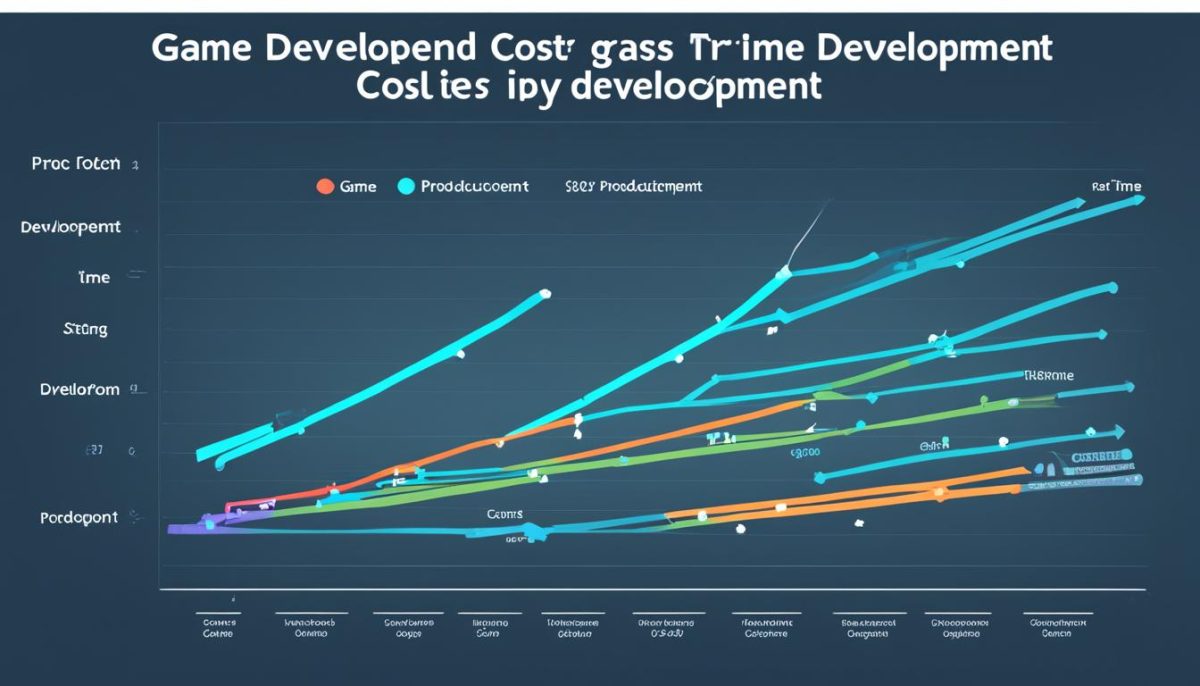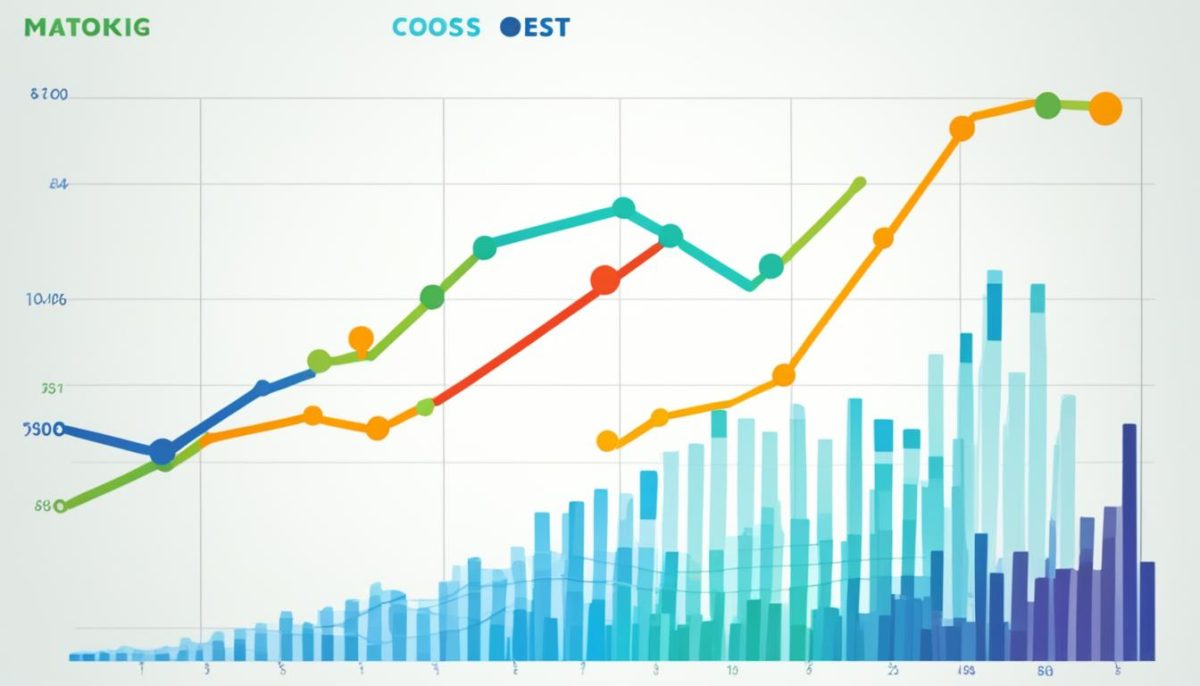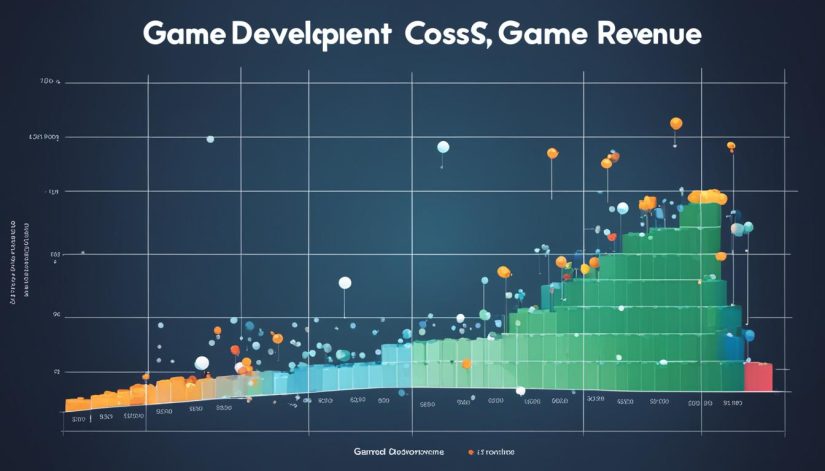In this section, we will explore the various factors involved in determining the cost of creating a video game. From the initial development to marketing and distribution, we’ll break down the expenses that go into making a game.
Creating a video game is an intricate process that requires careful planning and budgeting. Whether you’re an independent developer or part of a larger studio, understanding the costs involved is crucial for success.
Developing a game involves a range of expenses, from hiring talented designers and programmers to creating captivating artwork and sound effects. Each element contributes to the overall cost and plays a vital role in delivering an exceptional gaming experience.
But it doesn’t end there. Marketing and distribution efforts are equally important. You can develop the most incredible game, but if no one knows about it or can access it, it won’t generate the desired revenue.
We’ll delve into these different aspects throughout this article, uncovering the complexities and investments associated with game development. By understanding the cost breakdown, you’ll be better equipped to manage your budget and maximize returns.
Understanding Development Costs
When it comes to creating a video game, understanding the development costs is essential. As game development has evolved, so have the expenses involved in bringing a game to life. In this section, we’ll delve into the different aspects of development costs and how each element contributes to the overall expenses.
Game Design
Game design is the backbone of any successful video game. It encompasses the concept, mechanics, and overall gameplay experience. From ideation to prototyping, the game design phase requires expertise and creativity. Hiring experienced game designers and conducting thorough market research to ensure a unique and engaging game concept can increase development costs. However, investing in a well-crafted game design ultimately pays off by attracting and retaining players.
Programming
Programming is where the magic happens in game development. It involves coding the game mechanics, AI behavior, physics, and more. Skilled programmers are crucial for the smooth functioning of the game and optimizing its performance. The complexity and scale of the game can significantly impact development costs, as intricate gameplay mechanics and large-scale multiplayer features require extensive programming work. Additionally, staying up-to-date with the latest technology and platforms may add to the programming expenses.
Art Assets
Aesthetics play a vital role in capturing players’ attention and immersing them in the game world. Art assets include visual elements such as characters, environments, animations, and user interfaces. The development of high-quality art assets involves talented artists, graphic designers, and animators. Creating detailed and visually appealing assets can significantly impact the development costs. Moreover, the need for multiple iterations and revisions adds to the expenses, ensuring the final product meets the desired artistic standards.
Understanding the complexities and investments involved in game design, programming, and art assets helps game developers plan their budget effectively. By allocating resources to these crucial areas, developers can create a visually stunning and engaging game that resonates with players.

The Costs: A Summary
Let’s summarize the major development costs involved in creating a video game:
| Development Costs | Explanation |
|---|---|
| Game Design | The conceptualization, mechanics, and overall gameplay experience of the game. |
| Programming | The coding and implementation of game mechanics, AI behavior, and physics. |
| Art Assets | The creation of visually appealing elements such as characters, environments, and animations. |
Keep in mind that these costs are not fixed and can vary depending on the scope of the game, the expertise required, and other factors. By understanding the intricacies of development costs, game developers can make informed decisions and plan their resources accordingly.
The Impact of Marketing and Distribution
When it comes to creating a successful game, it’s not just about the development process. The impact of marketing and distribution on the overall cost and success of a game cannot be underestimated. From planning effective promotional campaigns to partnering with reliable distributors, every aspect plays a crucial role in reaching the target audience and ensuring successful distribution.

Marketing costs can encompass a range of expenses, including advertising, public relations, influencer collaborations, and social media campaigns. These efforts are essential for creating buzz, generating awareness, and attracting potential players to your game. By strategically allocating your marketing budget, you can effectively target your audience and maximize the impact of your promotional activities.
On the other hand, distribution costs involve the logistics of getting your game into the hands of players. This includes physical copies, digital downloads, and partnering with online platforms such as Steam or the Epic Games Store. Distributors play a crucial role in ensuring that your game reaches the widest possible audience. However, it’s important to consider the fees and revenue share agreements involved when selecting a distribution partner.
Maximizing the impact of promotional campaigns
Promotional campaigns are a key component of marketing a game successfully. To make the most of these campaigns, it’s crucial to develop a targeted strategy that aligns with your target audience. By analyzing player demographics, interests, and behavior, you can tailor your promotional efforts to reach the right people at the right time.
- Identify your target audience: Conduct market research to understand the preferences and habits of your potential players. This information will help you craft targeted messages and choose the most effective marketing channels.
- Create compelling content: Develop engaging trailers, gameplay videos, and other visual assets that showcase the unique selling points of your game. These assets will be vital in capturing the attention and interest of your target audience.
- Leverage social media: Utilize platforms like Facebook, Twitter, and Instagram to build a community around your game. Engage with your followers, share updates, and provide exclusive content to keep the excitement alive.
- Collaborate with influencers: Partnering with popular gaming influencers can help increase the visibility and credibility of your game. Consider reaching out to influencers whose audience aligns with your target market.
Selecting the right distribution channels
Choosing the right distribution channels is crucial to ensure the widest possible reach for your game. Depending on your target audience and platform compatibility, you can explore various distribution options:
- Physical copies: If you’re releasing a console game or a limited edition version, physical copies can provide a tangible and collectible experience for players.
- Digital downloads: The growing popularity of digital downloads makes them a convenient and cost-effective distribution method. Platforms like Steam and the Epic Games Store offer vast opportunities for exposure.
- Online platforms: Consider partnering with popular online gaming platforms, such as PlayStation Network, Xbox Live, or Nintendo eShop, to reach a wider audience and benefit from their established user base.
“When marketing and distribution are done right, they can substantially contribute to the success of a game. By strategically allocating resources, planning compelling promotional campaigns, and choosing the right distribution channels, game developers can effectively reach their target audience and maximize their returns on investment.”
Marketing and Distribution Costs Breakdown
| Marketing Costs | Distribution Costs |
|---|---|
| Advertising | Physical Copies Production |
| Public Relations | Digital Downloads |
| Influencer Collaborations | Online Platform Fees (Steam, Epic Games Store, etc.) |
| Social Media Campaigns | Revenue Share Agreements |
Managing Budget and Maximizing Returns
When it comes to game development, budget management is key to ensuring a successful project. As game creators, we understand the importance of balancing expenses while striving for high-quality deliverables. By effectively managing our budget, we can maximize our return on investment and increase the profitability of our game.
One of the best ways to maximize returns is through strategic monetization strategies. This involves carefully considering the in-game purchases and subscription models that align with our target audience. By offering valuable and enticing content for purchase, we can generate additional revenue and engage players on a deeper level.
Additionally, it’s crucial to maintain a close eye on our budget throughout the development process. By regularly reviewing and adjusting our expenses, we can ensure that we are staying within our financial limits and avoiding unnecessary overspending. This proactive approach allows us to allocate resources where they are needed most, optimizing our budget for maximum efficiency.

